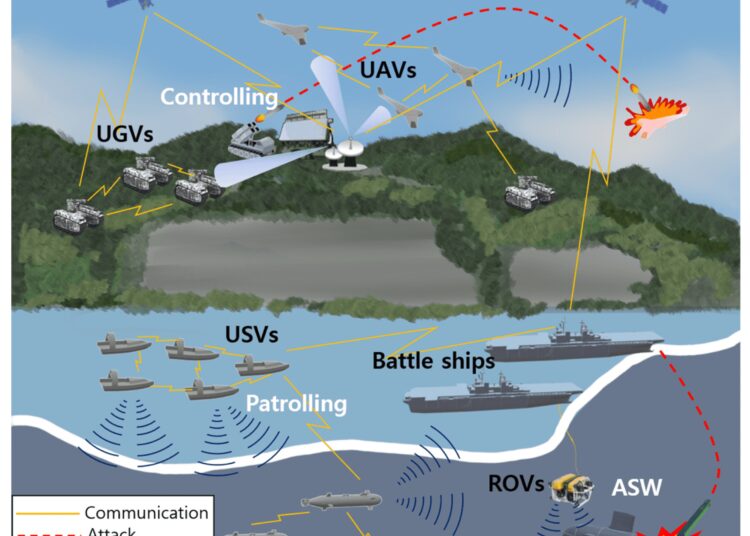This content discusses effective strategies for navigating through the uncertainty, chaos, and confusion of the fog of war in warfare. It emphasizes the importance of intelligence gathering to make informed decisions, decentralized decision-making to adapt to changing circumstances, flexibility and adaptability to adjust plans, responsive communication to relay information accurately and in a timely manner, and resilience and mental preparedness to handle the intense and stressful environment of the fog of war. By employing these strategies, commanders can enhance their ability to succeed in uncertain battlefield environments and gain an edge in the midst of chaos and uncertainty.
Navigating the Fog of War: Effective Strategies for Uncertain Battlefield Environments
Introduction
In warfare, the fog of war refers to the uncertainty, chaos, and confusion that arise from the dynamic nature of a battlefield. The fog of war can make it extremely difficult for commanders to accurately assess the situation, predict enemy movements, and make informed decisions. These uncertain environments require effective strategies to navigate through the fog and achieve success. In this article, we will explore some strategies that can be employed to overcome the challenges posed by the fog of war.
1. Intelligence Gathering
The foundation of effective decision-making in uncertain battlefield environments lies in intelligence gathering. Collecting accurate, up-to-date information about the enemy’s location, capabilities, and intentions is crucial. Various methods can be employed to gather intelligence, including aerial and satellite reconnaissance, ground-based surveillance, and human intelligence sources.
Additionally, advanced technologies such as drones and advanced sensor systems can provide real-time situational awareness, helping commanders make informed decisions based on the most current information available.
2. Decentralized Decision-Making
The unpredictable nature of the fog of war often necessitates decentralized decision-making. Commanders must empower their subordinate leaders to make independent decisions based on their understanding of the situation on the ground. This approach allows for faster response times and ensures that critical decisions are not delayed due to hierarchical bottlenecks.
By decentralizing decision-making, units can adapt to changing circumstances more effectively, exploit opportunities, and mitigate threats. However, this approach requires thorough training, mutual trust, and clear communication channels to ensure that actions remain aligned with the overall strategic objectives of the mission.
3. Flexibility and Adaptability
In uncertain battlefield environments, flexibility and adaptability are key attributes for success. As the situation evolves, commanders must be willing and able to adjust their plans and strategies accordingly. Rigid adherence to preconceived notions or overly detailed plans can be detrimental in such dynamic environments.
By maintaining a flexible mindset, commanders can respond rapidly to unexpected developments, exploit vulnerabilities in the enemy’s defenses, and maintain a tactical advantage. This flexibility may involve repositioning forces, changing the course of action, or even shifting the strategic focus based on emerging opportunities or threats.
4. Responsive Communication
Clear and responsive communication is of paramount importance in navigating the fog of war. With the potential for information gaps, misunderstandings, and rapidly changing situations, effective communication channels ensure that information is relayed accurately and in a timely manner.
Commanders should establish robust communication systems that facilitate the flow of information between all levels of command. This includes clear protocols for reporting, feedback mechanisms, and redundancy in communication systems to mitigate the risk of failure in crucial moments.
5. Resilience and Mental Preparedness
The fog of war can create an intense and stressful environment for military personnel. Uncertainty, danger, and the pressure to make critical decisions under challenging circumstances can take a toll on individuals and units. It is therefore essential for commanders to build resilience and mental preparedness within their forces.
Training programs should incorporate realistic and high-pressure scenarios to simulate the challenging conditions of the fog of war. This helps soldiers develop the mental fortitude to stay focused, adapt to rapidly changing situations, and make sound decisions under pressure.
Conclusion
Navigating the fog of war is a complex and challenging task that requires effective strategies, clear communication, and adaptability. By employing intelligence gathering techniques, decentralizing decision-making, maintaining flexibility, fostering responsive communication, and building resilience, commanders can enhance their ability to succeed in uncertain battlefield environments.
While the fog of war may never be completely eliminated, these strategies can help military forces gain an edge, exploit opportunities, and mitigate risks in the midst of chaos and uncertainty.












